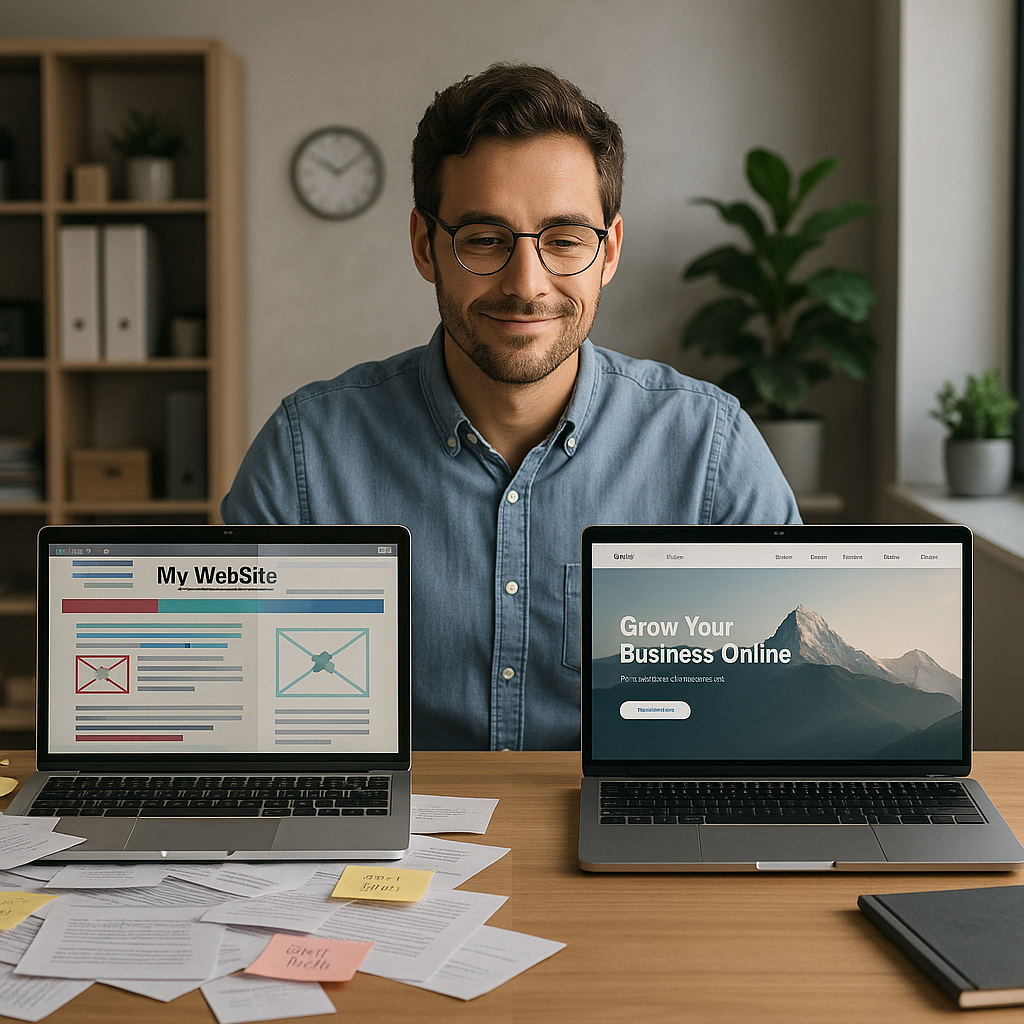Why Landing Pages Are Essential for Small Business Success
The Game-Changing Power of Landing Pages: A Small Business Owner's Secret Weapon
Ever wondered why some small businesses seem to effortlessly convert website visitors into paying customers while others struggle to make an impact? The answer might be simpler than you think: landing pages. But here's the thing - they're not just another marketing buzzword or passing trend. They're the unsung heroes of digital success, and if you're not using them, you're leaving money on the table.
Let's cut through the noise and get real about landing pages. Think of your website as a sprawling city, with countless streets and destinations. Now, imagine a landing page as your business's VIP entrance - sleek, focused, and designed with one purpose in mind. It's not trying to be everything to everyone; it's laser-focused on getting results.
The Magic Behind Landing Pages
Small business owners often ask me, "Why can't I just send people to my homepage?" Well, picture this: You're craving pizza, and you see an ad for a mouthwatering pepperoni special. You click it, but instead of being taken directly to the order page, you end up at the restaurant's main website. Now you're scrolling through their history, staff photos, and entire menu. Chances are, you might forget why you clicked in the first place!
That's exactly why landing pages exist. They eliminate distractions and guide visitors toward a single action, whether it's signing up for your newsletter, booking a consultation, or making a purchase. It's like having a skilled salesperson who knows exactly what your customer wants and leads them straight to it.
Why Your Small Business Desperately Needs Landing Pages
Think about the last time you walked into a store with a specific item in mind. Wasn't it frustrating when you couldn't find what you were looking for? Landing pages solve this problem in the digital world. They're your virtual storefront, product display, and checkout counter all rolled into one streamlined experience.
But here's where it gets really interesting. Landing pages aren't just pretty faces - they're powerful tools that can:
1. Skyrocket Your Conversion Rates
When visitors land on a page that perfectly matches their interests and needs, they're more likely to take action. It's like serving exactly what someone ordered at a restaurant - satisfaction guaranteed!
2. Boost Your Marketing ROI
Instead of throwing spaghetti at the wall and hoping something sticks, landing pages let you track exactly what works. Every click, every form submission, every sale becomes measurable data you can use to improve your results.
3. Build Trust and Credibility
In today's skeptical world, trust is currency. A well-designed landing page with social proof, testimonials, and professional design elements instantly boosts your credibility. It's like having dozens of satisfied customers vouching for you 24/7.
The Secret Sauce of Effective Landing Pages
Now, creating a landing page that converts isn't rocket science, but it does require some key ingredients. First up, you need a headline that grabs attention faster than a flash sale at your favorite store. It should speak directly to your visitor's desires or pain points.
Next, your copy needs to flow naturally, like a conversation with a friend. No corporate jargon or stuffy language - just clear, compelling messages that resonate with your audience. Remember those times when someone explained something complex in a way that just clicked? That's what we're aiming for.
Don't forget about visual appeal. Your landing page should be as clean and inviting as a newly organized closet. Use white space strategically, choose colors that reflect your brand, and make sure your call-to-action button stands out like a beacon guiding ships to shore.
The Mobile Factor: Don't Leave Money on the Table
Here's a shocking truth: if your landing page isn't mobile-friendly, you're potentially losing more than half your customers. People browse on their phones while waiting in line for coffee, during lunch breaks, or lounging on their couches. Your landing page needs to look as good on a smartphone as it does on a desktop - no pinching, zooming, or squinting required.
Getting Started: Easier Than You Think
The beauty of modern technology is that you don't need a computer science degree to create stunning landing pages. Platforms like Wix, Squarespace, and Leadpages offer drag-and-drop builders that make the process as easy as arranging furniture in a room. Start with a template, customize it to match your brand, and you're ready to roll.
Remember, perfection is the enemy of progress. Your first landing page doesn't need to win design awards - it just needs to work. Test different headlines, try various images, and tweak your call-to-action buttons. Each adjustment brings you closer to finding what resonates with your audience.
The Bottom Line
In today's digital landscape, landing pages aren't just nice to have - they're essential tools for small business success. They focus your message, streamline the customer journey, and turn casual browsers into loyal buyers. Whether you're just starting out or looking to grow your existing business, well-crafted landing pages could be the missing piece in your marketing puzzle.
So, what are you waiting for? Your next customer could be just one landing page away from discovering what makes your business special. Take that first step, create your landing page, and watch as your business transforms from a hidden gem into a customer magnet.





